How to celebrate Jane Austen on her 250th birthday
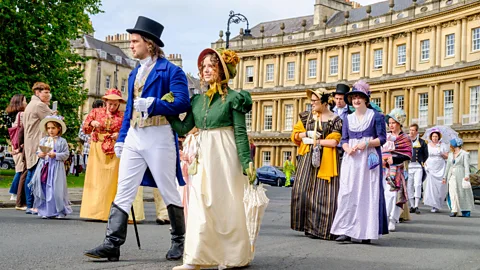 Alamy
AlamyAs travellers flock to the English countryside to celebrate the renowned novelist, we asked experts to weigh in on the best Austen-themed festivals, reenactments and balls of the year.
With bonnets and boarding passes ready, a brigade of Jane Austen fans from around the world is preparing to bombard Britain, eager to celebrate one of English literature's greatest writers throughout 2025 on her 250th birthday.
From the dashing John Willoughby in Sense and Sensibility to the spirited Emma Woodhouse in the eponymous Emma, Austen's characters have enchanted generations of readers, inspiring yearly pilgrimages to her home county of Hampshire and beyond to trace her footsteps. This year, these journeys take on a celebratory air as travellers flock to the English countryside for literary festivals, reenactments and Regency balls designed to pay tribute to the author.
Here are the year's most ostentatious events, according to Austen experts – the ones promising fans an unforgettable birthday bash for a writer who presciently wrote, "One cannot have too large a party."
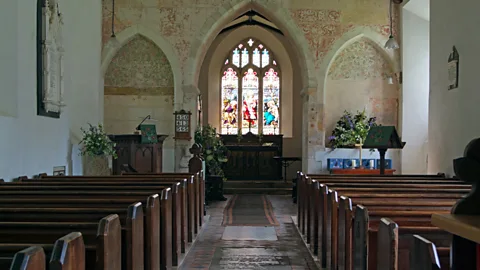 Alamy
AlamyExplore the country church that shaped Austen's early years
Although her vivid portrayals of English life now epitomise the extravagance of the Georgian era, Austen's own story began modestly. She was born on 16 December 1775, in the village of Steventon, in Hampshire, England, the seventh child and youngest daughter of clergyman George Austen and his wife Cassandra.
"It must have been a bustling household, with the large Austen family and the boys her father tutored," said Janet Todd, one of Britain's leading Austen scholars. Although the rectory where the Austens lived was demolished in 1824, St Nicholas Church, where they worshipped, still stands. A dedicated team of volunteers is working to ensure every visit to the historic chapel is memorable.
Not at all bowing to the idea of being the country cousin to the author's more well-known former towns, like Bath and Chawton, Steventon has organised lively events for June, July and December. Visitors can attend the Jane Austen's Words and Music Chamber concert on 8 June at her family's chapel or join a country fair on 6 June held in the same pump field where the Austen's parsonage home once stood. Then, in remembrance, the church will hold a special Thanksgiving Service for Austen on her birthday on 16 December.
 Alamy
AlamyPrepare your petticoats for a twirl in Brighton
In Austen's England, balls were pivotal to social life and courtship among the middle and upper classes. For Zack Pinsent, a 29-year-old tailor known for exclusively wearing Regency-era attire, attending a ball is the ultimate tribute to Austen. This year's calendar is packed with options, from a Regency Week Ball in Alton this June to a Yuletide Birthday Ball in Bath come December. However, Pinsent recommends the Brighton Royal Grand Pavilion Ball on January 25, which he is organising and has already drawn attendees from 16 countries.
"Anyone can attend, as long as they have the right outfit," said Pinsent, who has secured the Royal Pavilion for the eponymous Regency-inspired event.
Brighton's Royal Pavilion, built by George IV, Austen's contemporary and admirer, hosted extravagant balls in its heyday. Though there's no evidence Austen ever visited, Pinsent speculates she may have, given Brighton's influence on her imagination. The seaside town even earned a mention in Pride and Prejudice, when Austen wrote of Lydia Bennet: "At Brighton, she will be of less importance even as a common flirt than she has been here."
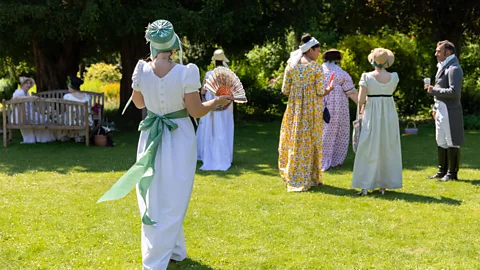 Luke Shears for Jane Austen's House
Luke Shears for Jane Austen's HouseDive into Austen's Bath
Austen set two of her novels, Persuasion and Northanger Abbey, in Bath, but her feelings about the resort town remain debated. Her famously dramatic reaction to her family's move there from Steventon – she allegedly fainted – hints at reluctance. Still, during her years in Bath (1801-1806), its vibrant social scene, from galas at Sydney Gardens to events at the Assembly Rooms, inspired her work. However, personal tragedy, including her father's death during this time, likely influenced her perception of the city.
"The party line is, we don't really know how she felt about Bath," said Georgia Delve, director of the Jane Austen Centre Festival (held 12-21 September in Bath). "But I think in terms of her storyline and the characters, you walk around the city, and it's all written in the stone: you get Bennett Street, you've got Bartlett Street, you've got the Assembly Rooms, you've got the Royal Crescent, you've got the Paragon, you know, great Pulteney Street. All these places come up in her letters and novels."
Bath's enduring love for Austen is clear, exemplified by its Guinness World Record for the largest gathering of people in Regency costumes. This year's Austen Festival begins with a grand promenade, drawing fans worldwide.
Beyond the festival, the Jane Austen Centre is hosting two summer Regency balls, including a Persuasion-themed Nautical Ball on 31 May and a unique Sanditon-inspired event based on Austen's unfinished novel of the same name on 28 June. The event will include dance workshops to master waltzes and cotillions.
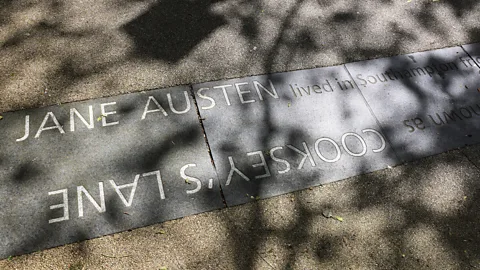 Alamy
AlamyDiscover a piece of Austen's literary history in Southampton
The port city of Southampton played a role in Austen's life on three occasions – an often-overlooked fact that the town is hoping to rectify this year. She briefly attended boarding school there, celebrated her 18th birthday at the city's historic Dolphin Hotel, and later stayed there with her brother after departing Bath. To honour the city's deep ties, Southampton plans to display her travel writing desk now through 23 February at God's House Tower, on loan from the British Library as part of the exhibit In Training for a Heroine. The portable mahogany desk was a gift from her father, and on it, she wrote what she referred to as "My own darling child," the first draft of Pride and Prejudice. Tickets are free, but visitors must reserve a time to see the installation.
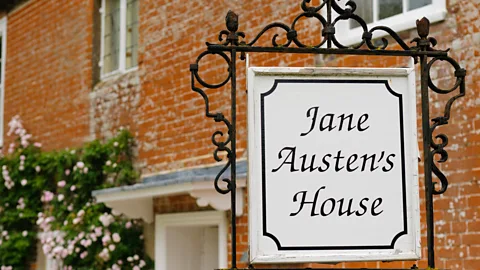 Alamy
AlamyStep inside Austen's house
According to Todd, much of Austen's enduring appeal lies in her connection to a romanticised England. Hampshire, where she lived, wrote, and set many of her novels, preserved its charm by avoiding industrialisation. This timeless quality makes a visit to the author's former home in Chawton, now called Jane Austen's House, a uniquely transportive experience. After her father's death left Jane, her sister and their mother nearly penniless, with only £210 a year, according to Todd, Jane's brother Edward eventually moved them into his cottage in 1809. It was here, in this idyllic setting, that Jane refined her six novels.
To celebrate the writer's 250th birthday, the Jane Austen House hosts a Pride and Prejudice Festival from 23-28 January, featuring Austenmania, a year-long exhibit dedicated to her posthumous cinematic legacy. The site has also launched a permanent exhibition, Jane Austen and the Art of Writing, showcasing her creative process and first editions of her works. "It's quite moving to be in there with them," said 15-year docent Janie McShane of the priceless tomes. For many visitors, that's the real allure, to see how Austen lived, "to tread," McShane said, "where she tread".
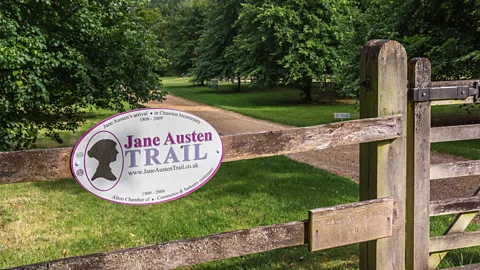 Alamy
AlamyStroll to town like the Bennetts
Austen was an enthusiastic walker. In a world where a woman's life was nearly always spent supervised or in the company of family and friends, taking a stroll likely meant freedom and escape. "Austen's characters walk to be themselves and to change," writes Rachel Cohen in Austen Years: A Memoir in Five Novels.
Pat Lerew, chair of the Jane Austen Alton Group, says her village will give visitors the same opportunity. Alton is reasonably short stroll from Austen's House. "We know Jane and her sister walked into Alton two or three times a week to shop or visit with friends," Lerew said. "She would also pick up the coach here to go to London." Similarly, the 10-day Jane Austen Regency Week (20-29 June) will include a Regency Day with stalls and entertainment guests can peruse, followed by a ribbon cutting on a new public Jane Austen Garden.
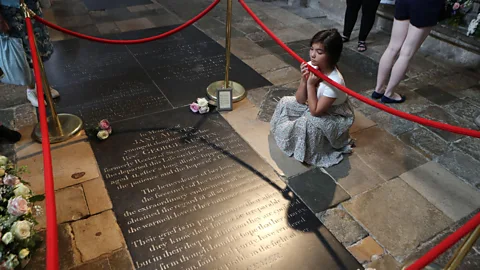 Alamy
AlamyPay your respects in Winchester
The final chapter of Jane's life was tragic. At 41, she fell ill with a mysterious condition that modern experts have speculated may have been Addison's disease or Hodgkin lymphoma. Her deteriorating condition required a move from Chawton cottage to Winchester to seek specialised care. Jane and her sister Cassandra took up residence at No. 8 College Street, a property now owned by Winchester College, a historic boarding school attended by eight of Austen's nephews. This summer, for the first time ever, the school is opening the apartments to the public.
"The apartment remains strikingly similar to how it was in Austen's time," said Richard Foster, the Fellows' Librarian and Keeper of Collections at the college, who has played a key role in organising the opening. "Austen describes a neat little drawing room with a bay window overlooking the headmaster's garden, and those features are still intact." It was in this space that Austen penned her final poem, and from the same bay window, Cassandra watched her sister's funeral procession – restricted by 19th-Century customs that barred women from attending.
Tickets for this limited-time opening are available online. Visitors can also honour Austen at her final resting place in the north nave of Winchester Cathedral. Her simple gravestone, devoid of any mention of her literary brilliance, seems almost ironic – a fact Austen herself might have found darkly amusing. The modest epitaph only nods to the "extraordinary endowments of her mind", a description she might have skewered with her signature wit. After all, as she once wrote, "For what do we live, but to make sport for our neighbours and laugh at them in our turn?"
--
If you liked this story, sign up for The Essential List newsletter – a handpicked selection of features, videos and can't-miss news, delivered to your inbox twice a week.
